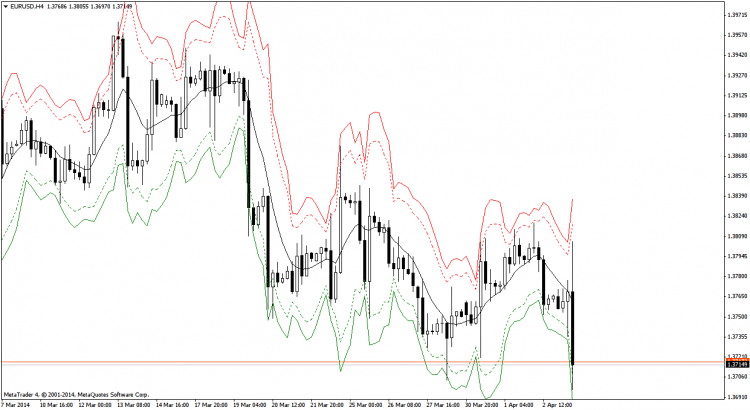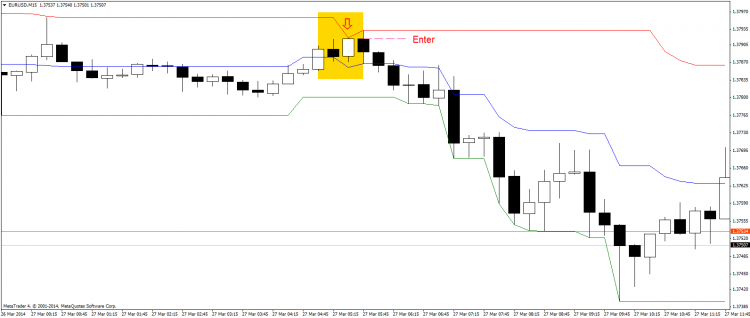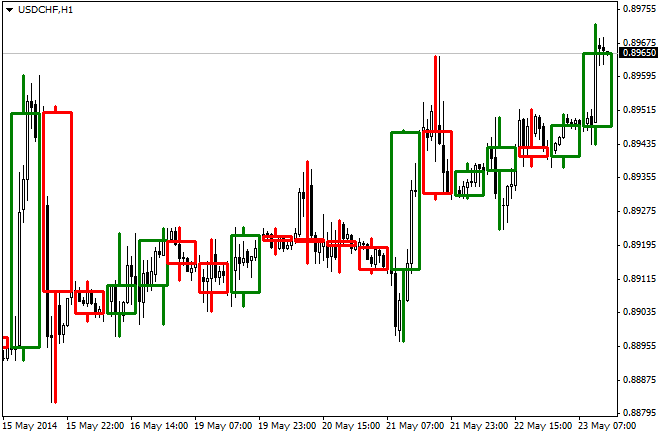Entry Rules:
1. The price must cross over the moving average line and close on the opposite side
2. The trade’s direction will be determined based on the direction of the cross;
1. a long position when the price crosses from below and closes above the moving average3. A trade can only be placed if it coincides with the current trend;
2. a short position when the price crosses from above the moving average and closes below
1. a long position must have a positive moving average slope3. no trade should be placed if there is a flat moving average slope
2. a short position must have a negative moving average slope
4. The highest high or the lowest low must not touch, pass or be very close to dash lines (reversal points).
Exit Rules:
1. The position will be closed if the price crosses the moving average to the side opposite of the entry position and reaches the 1.5 ATR level on that side.
2. The position will be closed if the price crosses the moving average to the side opposite of the entry position and closes on that side.
3. The position will be closed if the price reaches the 2.0 ATR level.
4. The position will be closed if the price crosses the 1.5 ATR level on the entry side and closes;
1. below the 1.5 ATR line for long position
2. above the 1.5 ATR line for short position


